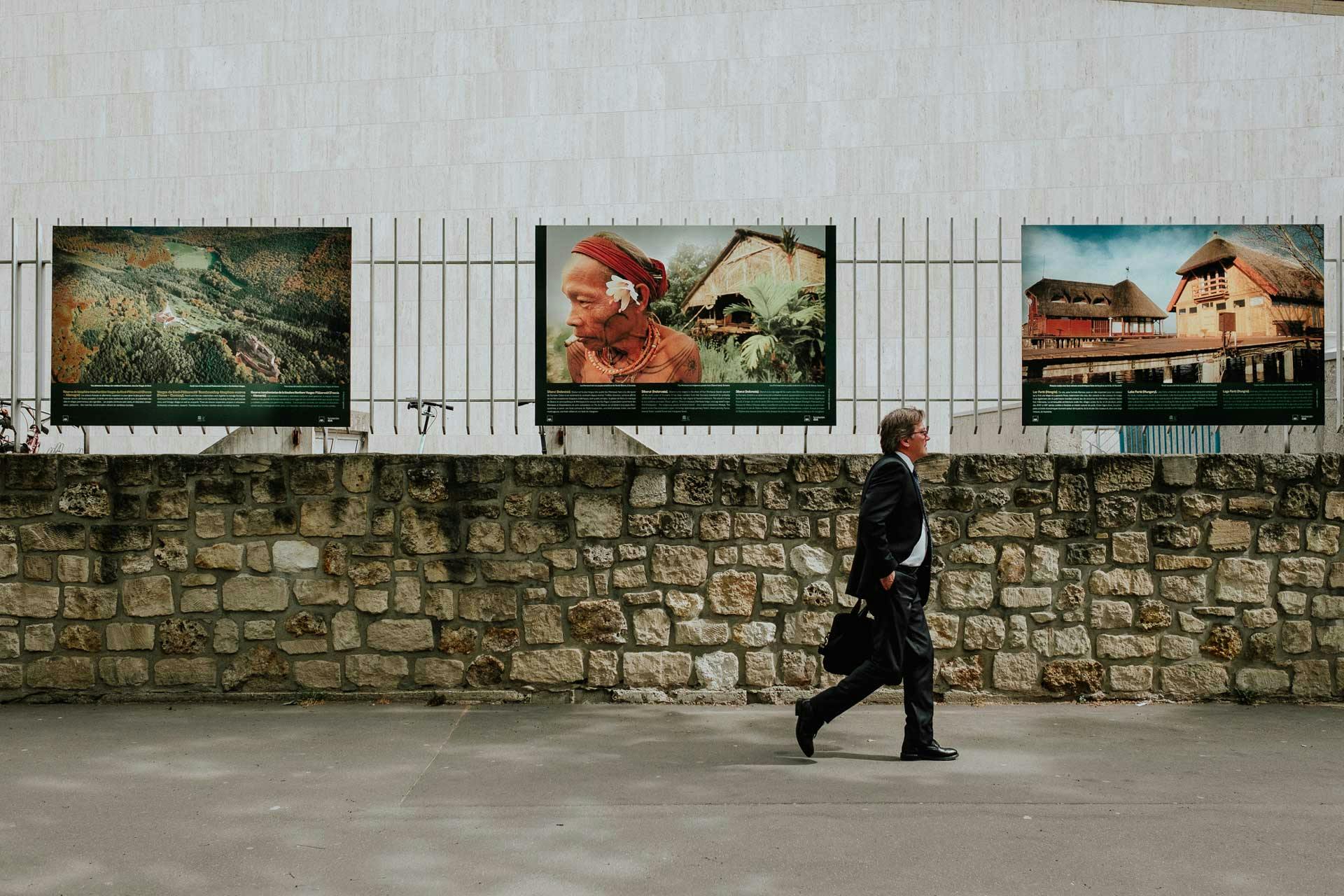
April 29, 2019
Engaging in the fight for biodiversity: an absolute necessity
The “Man and Biosphere - The Biosphere Reserves” exhibition will be displayed until mid-May on the fences around the UNESCO headquarters in Paris. These images aim to raise our emotional awareness of the importance of the fight for biodiversity, which is a major issue on the agenda of many upcoming international meetings.
4 minutes
To mark the 7th Plenary of the Intergovernmental Science-Policy Platform on Biodiversity and Ecosystem Services (IPBES), we have gathered together some of the views of Shamila Nair-Bedouelle, Assistant Director-General for Natural Sciences at UNESCO, and Céline Soubranne, Chief Corporate Responsibility Officer at AXA. Here’s what they told us.
Shamila Nair-Bedouelle: Biodiversity means biological diversity at several scales. It concerns all living organisms, from bacteria to whales, not forgetting plants. The first scale is genetic: we talk about genetic variety within a single species. The second is species diversity within an ecosystem. Finally, this term covers the diversity of these ecosystems and their interactions. With this schema in mind, we can more easily understand the fragility of the balances that determine biodiversity.
Céline Soubranne: When we talk about biodiversity these days, unfortunately it is because these balances are increasingly being undermined. There is an alarming decline in species number: according to WWF’s Living Planet Index, biodiversity has decreased by 60% in four decades. Renowned scientists even speak of the sixth extinction event, the last one being the period when the dinosaurs disappeared…


What are the threats to biodiversity?
Shamila Nair-Bedouelle: According to reports published in 2018 by the Intergovernmental Science-Policy Platform on Biodiversity and Ecosystem Services (IPBES), the causes of biodiversity loss are: climate change, invasive species, overexploitation of natural resources (intensive agriculture, overfishing), soil pollution and urbanization.
Céline Soubranne: What is important to understand is that the majority of these factors are directly related to human activity. Climate change (also caused by humans) greatly aggravates this biodiversity loss, while biodiversity is one of the keys to fight against global warming. The absorption of the carbon gases responsible for the greenhouse effect depends on the equilibrium of biodiversity.


What are the risks related to biodiversity loss?
Céline Soubranne: It is often forgotten that behind the tragedy of the disappearance of an animal or plant species, there is also a human victim. From an insurer’s point of view, this is an alarming observation. A forest helps regulate a region’s water cycle, which improves flood resilience, and also mitigates the adverse effects of heat waves. Biodiversity also enables the efficient functioning of agriculture and human nutrition. In fact, biodiversity is essential for health, notably since 50% of our medicine come from natural sources, and especially in emerging countries where 80% of the population receives treatment using traditional plant-based medicines.
Shamila Nair-Bedouelle: The decrease of biological diversity undermines the vital contributions that nature brings to humanity. It threatens the economy, livelihoods, food security, cultural diversity (in developing countries, biodiversity is linked to a way of cultivating, building, eating, etc.) and quality of life. Because it directly impacts the most vulnerable populations disproportionately, it also accentuates inequalities. It is therefore a major threat to world peace and security.
It’s clearly a very serious issue. This exhibition mainly features images of humans interacting with nature or animals in lush landscapes. Why this choice rather than images of plastic pollution in oceans?
Shamila Nair-Bedouelle: We consider that humans are part of ecosystems, that we are interconnected, interrelated. This exhibition shows that human-nature interactions can and must be harmonious, that there are no foregone conclusions, whatever the socio-economic and cultural contexts. That is why we contacted AXA, following the recommendation of Spain’s Permanent Delegation to UNESCO.
Céline Soubranne: And we are very pleased about this! This exhibition was originally designed by AXA Spain, aiming to restore this emotional link that binds us to nature, and that we sometimes lose in highly urbanized environments. It has been displayed throughout Spain in very busy areas, bringing this positive message to the largest numbers. Because although as a species we are the greatest threat to biodiversity, we are also the greatest beneficiaries. I hope we can also be the greatest saviors.
Shamila Nair-Bedouelle: This exhibition enables us to step away from the alarming discourse, based on sound scientific evidence, which can give the impression that it is too late to do anything. It is possible to act, together and individually, each on their own scale: this exhibition aims to send out this message to our delegates and colleagues, to the IPBES 7 participants and to the public.


Why is this IPBES meeting important?
Shamila Nair-Bedouelle: IPBES is meeting from April 29 to May 4, 2019, for its 7th plenary session at UNESCO Headquarters, at the invitation of France. At the end of this meeting, the first Global Assessment Report on Biodiversity and Ecosystem Services will be published since 2005. It will be developed by 150 leading international experts from 50 countries, bringing together the representation of natural and social sciences, with further contributions from 250 additional experts.
Céline Soubranne: For us, as a company, this approach is very important: it provides clear figures and defines science-proof objectives. The first step towards better biodiversity protection is to make reliable information available to all, which can enable action to be undertaken.
Shamila Nair-Bedouelle: For a long time, the theme of biodiversity has been confined to discussions among experts and scientists, but it relates to all our lives. Better communication on these issues, the involvement of sectors in strategy development, the sharing of solutions, all improve ownership of these issues and enable all of us to be empowered to become actors of a necessary change.
What’s next after awareness raising?
Céline Soubranne: I mentioned earlier about an emotional relationship with nature. This must serve a second, more rational step: that of action. AXA has already been engaged in climate change work, but we thought it was also important to go further in the conservation of ecosystems and species. We do this by funding research through the AXA Research Fund, particularly this year with projects on ocean, marine biodiversity and conflict prevention. But also through the various aspects of our insurance business, by refusing to cover boats that do not declare catch volumes to the authorities, or by disinvesting from non-sustainable forestry operations. We are currently going further in this regard, and more announcements will follow later this year.
Let's talk about biodiversity
On the occasion of the organization of the exhibition "Man and biosphere", we asked passers-by in front of the fences around the UNESCO headquarters to understand their vision of biodiversity and understand their vision of biodiversity and the efforts they believe should be made to better protect it:



